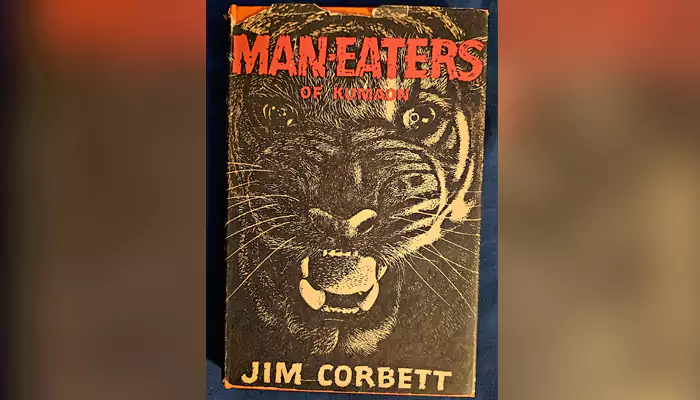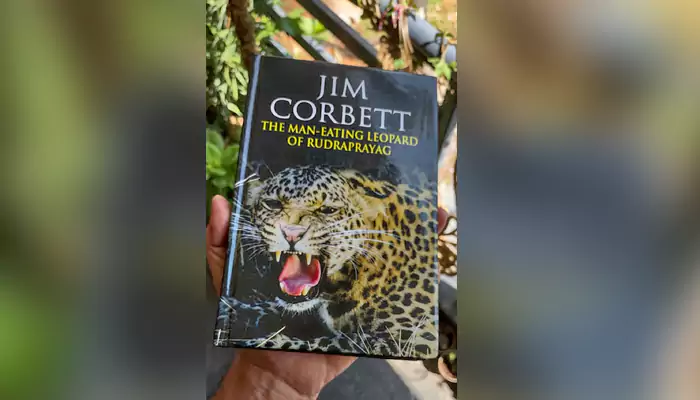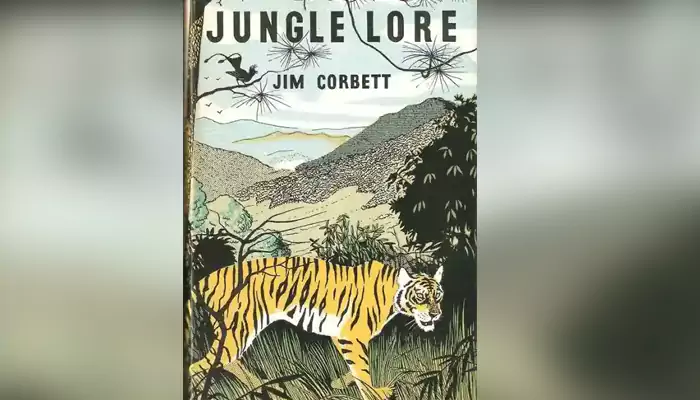Jim Corbett's Death Anniversary: Have You Read THESE Best-Selling Books by the Legendary Hunter?
- Sayan Paul
- 8 months ago
- 6 minutes read

Corbett's writing is as legendary as his hunting—sharp, clear, and straight to the point.
Satyajit Ray had Feluda say in 'Royale Bengal Rahasya' (the novel), “Most hunters, when they traded the gun for the pen, found success there too. Corbett’s language was stunningly beautiful—maybe it came from living in the wild for so long.” And honestly, Feluda wasn’t wrong. Jim Corbett, the cool dude who hunted so many man-eaters in the jungle, was just as sharp with his words. When he started putting his experiences on paper, those tales of wildness and heart-pounding chases became instant hits. Most of those books were bestsellers. And they still fly off the shelves faster than hot kachoris on a winter morning.
What makes Corbett’s writing so gripping is how real it feels. You aren’t just reading about the jungle—you are in it, and witnessing the whole thing in your imagination. The rustling leaves, the silence before the pounce, the human side of the hunter—it's all there. As he once wrote, “The fear of death is a terrible thing,” and boy, he made you feel it. That’s what makes him truly legendary. Not just a hunter. But a storyteller with the heart of the jungle beating in his pen.
1930 :: Jim Corbett Posing With Dead Tiger of Powalgarh pic.twitter.com/slCtTHNz65
— indianhistorypics (@IndiaHistorypic) July 29, 2021
(Credit: indianhistorypics)
It's Corbett's 70th death anniversary today. And hence, let's have a look at some of his best-selling books that everyone should read.
Man-Eaters of Kumaon
This one’s - and there's no other way to put it - Corbett’s magnum opus. 'Man-Eaters of Kumaon' is the book that turned him into a global sensation. The collection of ten stories details his encounters with notorious man-eating tigers of Kumaon, including the Champawat Tiger, which allegedly killed over 436 people—a world record.
Why it’s unforgettable:
The book is not just about Corbett hunting tigers. He studies them—understands their motives, their pain, and even their psychology. Most of the man-eaters, he argues, were forced into attacking humans due to injuries, old age, or bullet wounds—often inflicted by irresponsible hunters.

The writing style is direct and vivid, with an almost cinematic pacing. You'll feel the humid silence before a tiger's growl, the adrenaline of a stalk, and the somber reflection after a kill. It’s part thriller, part nature writing, part philosophical musing.
The Man-Eating Leopard of Rudraprayag
Unlike the above-mentioned book, 'The Man-Eating Leopard of Rudraprayag' focuses entirely on one incredibly elusive leopard that haunted the Himalayan foothills near Rudraprayag. For nearly a decade, this animal terrorized villages, dragging people out of their huts at night. His body count was, according to some reports, at least 125.
What makes it different:
First and foremost, this isn’t a typical chase. It’s a cat-and-mouse psychological drama, with the leopard outsmarting Corbett time and again. It took him over a year to finally track the beast down. There's a line in the book: “The leopard had become more than a killer; it had become a phantom that ruled the night.”

Credit: @vinaykumar4908
Corbett explores how trauma and terror ripple through entire communities. The book is as much about the people as it is about the predator. Superstitions, fear, and faith run deep in these pages.
Jungle Lore
If the first two books were action-packed, 'Jungle Lore' is Corbett’s love letter to the jungle where he grew up and spent most of his life. Published in 1953, the book blends autobiography with vivid accounts of tracking wildlife, hunting man-eaters, and more.
Why you’ll love it:
This is undoubtedly Corbett unplugged. He talks about his childhood fascination with birds, the first time he learned to track an animal, and how the jungle became his teacher. There’s no bravado here—just wonder, humility, and wisdom.

The language is poetic and full of nostalgia. Some passages feel like you’re sitting under a tree with Corbett, listening to an old man tell his favorite stories with a glint in his eye. And it's really one of the few wildlife books that will actually make you emotional. You’ll miss the forests Corbett talks about—even if you’ve never stepped foot in one.
The Temple Tiger and More Man-Eaters of Kumaon
'The Temple Tiger and More Man-eaters of Kumaon' is a mix of gripping man-eater tales and some fascinating jungle anecdotes. It includes the story of the Temple Tiger, and through vivid storytelling, Corbett details tracking dangerous predators, protecting villages, and respecting nature, blending adventure with insights into jungle life and local culture.
Why it stands out:
Because the book shows Corbett’s evolution. By this point, he had started refusing to kill unless absolutely necessary. He was beginning to fully embrace the role of conservationist, not hunter.
The Temple Tiger and More Man-Eaters of Kumaon by Jim Corbett (1954) with a jacket by Eric Fraser pic.twitter.com/iTPLZrB57M
— Books Landscape Magic (@BooksnMagic) February 16, 2019
(Credit: Books Landscape Magic)
The stories of the Muktesar man-eater and Talla Des man-eater are particularly chilling. But what you’ll remember most are Corbett’s descriptions of the terrain, the eerie silences, and his growing internal conflict.
My Kumaon: Uncollected Writings
Published decades after Corbett’s death, 'My Kumaon: Uncollected Writings' is a curated collection of lesser-known essays and letters—some never seen before. If the other books are the main dishes, think of this one as a dessert with hidden flavors.
Why it’s worth reading:
In this book, you get glimpses of Corbett the philosopher, the conservationist, and even the accidental poet. His thoughts on how India was changing, and how wildlife needed saving, are eerily relevant today. You see his softer side—his pride in the villagers who helped him, his rage at hunters who killed just for sport, and his unshakeable belief in living with nature, not against it.
Well, more than a man with a rifle, Jim Corbett is a storyteller who makes you feel every heartbeat of a jungle. His books are about understanding nature’s rhythm, and knowing when to take a life—and when to walk away. So even if you’ve never set foot near a forest, trust me—pick up any of these books and let Corbett guide you through the wild. You’ll never look at nature the same way again.










